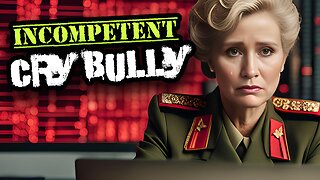Rockwell Automation's Studio 5000 Servo Controls - Understanding Timing & Data use
Studio 5000 Servo Controls - Understanding Timing & Data use
This video was made to discuss timing and how it relates to writing plc logic or understanding why a servo might be experiencing weird issues that do not make sense, it is very possible that timing is one of the causes.
Rockwell Automation's Studio 5000 Servo Controls are a key component of many industrial automation systems, providing precise control over the movement of servo motors in real-time. In this article, we will explore the concepts of timing and data use in Studio 5000 Servo Controls and how they play a critical role in the operation of these systems.
To understand timing and data use in Studio 5000 Servo Controls, it is first important to understand the basic operation of a servo motor. A servo motor is a type of rotary actuator that uses feedback to control the position, velocity, or torque of the motor. In a servo system, the servo motor is connected to a control system, which sends commands to the motor in the form of electrical pulses. These pulses control the position of the motor by determining the duration of the pulse, or pulse width.
In Studio 5000 Servo Controls, timing and data use play a critical role in the operation of the servo motor. The control system uses data from various sensors, such as encoders and position feedback devices, to determine the current position and velocity of the servo motor.
This data is used to calculate the required pulse width for the servo motor to achieve the desired position or velocity.
The timing of the pulse width is also important in Studio 5000 Servo Controls. The control system sends pulses to the servo motor at a specific frequency, known as the control frequency. The control frequency determines the speed at which the servo motor can respond to commands and make adjustments to its position.
A higher control frequency allows the servo motor to respond more quickly to changes in the system, while a lower control frequency results in slower response times.
In addition to the control frequency, the timing of the pulse width is also affected by the servo motor's response time. The response time is the time it takes for the servo motor to respond to a change in the pulse width.
A longer response time means that the servo motor will take longer to make adjustments to its position, while a shorter response time allows for faster adjustments.
The use of data in Studio 5000 Servo Controls is also critical for ensuring the accuracy and precision of the servo motor's movement. The control system uses data from various sensors to calculate the required pulse width for the servo motor to achieve the desired position or velocity.
This data is also used to adjust the control frequency and response time of the servo motor as needed to ensure that the servo system is operating at optimal performance.
In conclusion, timing and data use are key concepts in the operation of Rockwell Automation's Studio 5000 Servo Controls. The control frequency, pulse width, and response time of the servo motor all play a critical role in the accuracy and precision of the servo system, while data from various sensors is used to ensure optimal performance.
Understanding these concepts is essential for the effective operation and maintenance of servo systems in industrial automation applications.
This is mainly a discussion that shows important points about using data within the program from the course rate update time or the RPI from a device.
Thank you for watching the video.
Learn, Implement, Succeed
Visit:
https://www.allen-bradley-plc-training.com/
Other social media:
LinkedIn: https://www.linkedin.com/in/shane-welcher-sr/
Facebook: https://www.facebook.com/OnlinePLCSupport
#ServoControl #ServoControls #RSlogix5000 #Studio5000
-
 5:21
5:21
Shane Welcher
6 months agoRockwell Automation's Studio 5000 V30 Servo Motion Group Not Synced
11 -
 16:31
16:31
GeekyNerdyTechy
1 day agoZHIYUN Fiveray M20C Combo Light Review & Tutorial
90.3K7 -
 8:29
8:29
ParisDemers
1 day agoThe Kratos/God Of War Workout Program (His Real-Life Training)
77.9K6 -
 16:14
16:14
CarlCrusher
1 day agoSkinwalker's Evil Twin - Beyond Skinwalker Ranch Behind the Scenes Season 1 ep 2
80.6K10 -
 58:35
58:35
Crime Circus
1 day agoMackenzie Shirilla KlDNAPPED!! True Crime Documentary!
88.8K27 -
 8:03
8:03
Bearing
1 day agoE-Safety Karen INVENTS Elon Musk HARASSMENT While LEAKING Private Details!
96.8K111 -
 17:16
17:16
Clownfish TV
1 day agoMedia Melting Down Over Mainstream Media Meltdown...
121K86 -
 1:11
1:11
Gamazda
1 day agoFlight of the Bumblebee - Rimsky-Korsakov
112K85 -
 1:00:21
1:00:21
MYLUNCHBREAK CHANNEL PAGE
1 day agoA Little Season in New York City
103K95 -
 11:56
11:56
China Uncensored
1 day agoThe Philippines Threaten War with China
87.5K76